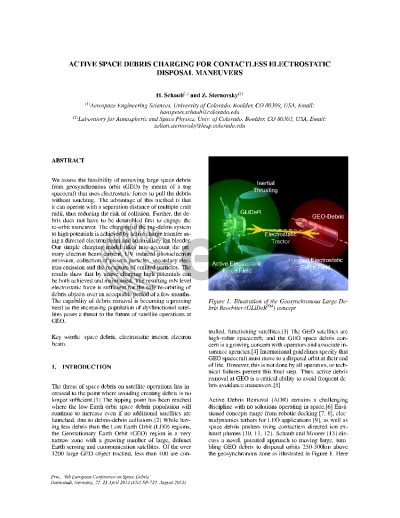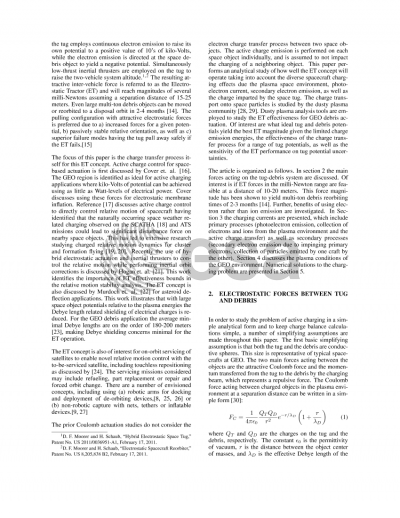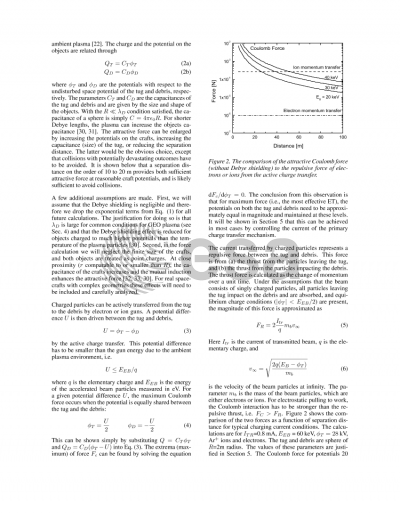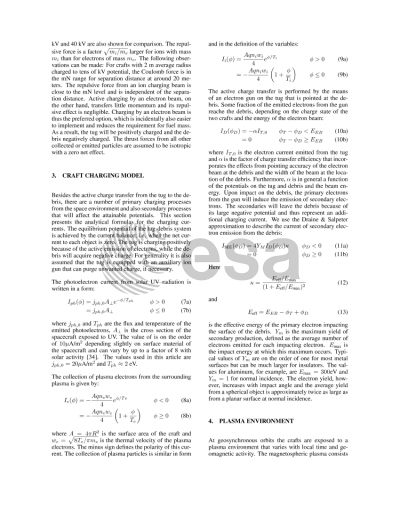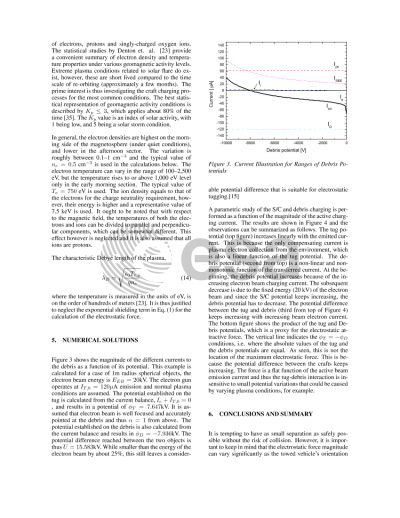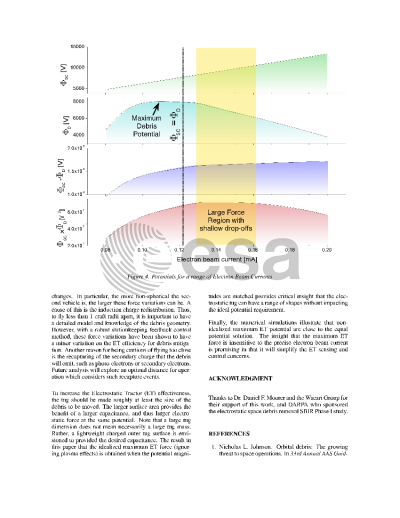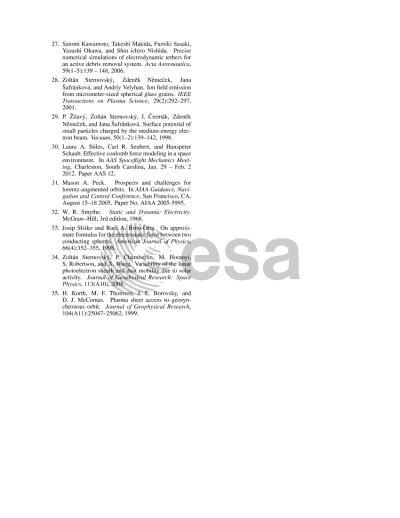Document details

Abstract
We assess the feasibility of removing large space debris from geosynchronous orbit (GEO) by means of a tug spacecraft that uses electrostatic forces to pull the debris without touching. The advantage of this method is that it can operate with a separation distance of multiple craft radii, thus reducing the risk of collision. Further, the debris does not have to be detumbled first to engage the re-orbit maneuver. The charging of the tug-debris system to high potentials is achieved by active charge transfer using a directed electron beam and an auxiliary ion bleeder. Our simple charging model takes into account the primary electron beam current, UV induced photoelectron emission, collection of plasma particles, secondary electron emission and the recapture of emitted particles. The results show that by active charging high potentials can be both achieved and maintained. The resulting mN level electrostatic force is sufficient for the safe re-orbiting of debris objects over an acceptable period of a few months. The capability of debris removal is becoming a pressing need as the increasing population of dysfunctional satellites poses a threat to the future of satellite operations at GEO.
Preview
